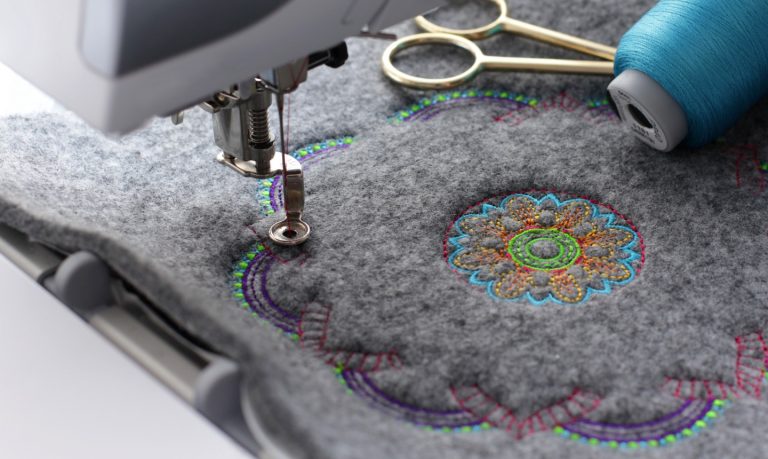Mastering the Embroidery Digitizing Process: Your Ultimate Guide
Embroidery digitizing is a careful craft that calls for accuracy and knowledge to equate intricate styles into electronic styles for equipment needlework. As artisans embark on this trip to grasp the embroidery digitizing procedure, a detailed understanding of the fundamentals sets the structure for quality. Nevertheless, past the fundamental knowledge lies a world of innovative software application, specialized devices, and nuanced methods waiting to be discovered. By delving into the subtleties of digitizing, one can unlock a globe of innovative opportunities and raise their needlework tasks to new elevations.

Comprehending Needlework Digitizing Essentials
Needlework digitizing fundamentals develop the structure whereupon detailed styles are converted into machine-readable formats for exact sewing. This initial action in the embroidery digitizing process is important for making certain that the last embroidered product is a devoted representation of the initial design. Comprehending embroidery digitizing basics involves comprehending key concepts such as stitch kinds, stitch instructions, density, padding, and pull compensation.
Stitch kinds play an essential role in determining the visual and textural outcome of the stitched style. By selecting the suitable stitch kind, whether it be satin, fill, or running stitch, digitizers can achieve the preferred result and improve the overall quality of the needlework. Additionally, stitch direction influences the flow and measurement of the style, while thickness establishes the spacing and protection of the stitches.
Additionally, padding sewing supplies stability to the style by safeguarding the material and preventing distortion during the needlework procedure. Pull settlement is another crucial consideration to combat the natural tendency of textile to agreement when sewn. Understanding these embroidery digitizing essentials is essential for creating professional-quality embroidered products.
Picking the Right Digitizing Software Application
Selecting the suitable digitizing software is a critical choice that substantially impacts the effectiveness and top quality of the needlework digitizing procedure. Digitizing for Embroidery. When selecting the ideal digitizing software program, it is vital to think about variables such as the intricacy of designs you plan to create, the user-friendliness of the software application, the degree of customer assistance offered, and the compatibility with your embroidery maker
There are different digitizing software choices readily available on the market, varying from fundamental programs for newbies to advanced software application for specialist digitizers. Some preferred choices consist of Wilcom EmbroideryStudio, Hatch Embroidery Software Program, and PulseID. These software use a vast array of devices and functions to help you develop complex layouts easily.
Before choosing, it is a good idea to discover the different software alternatives through cost-free trials or trials to figure out which one finest fits your needs. In addition, reading testimonials and seeking referrals from experienced digitizers can provide useful understandings right into the toughness and weaknesses of each software (Digitizing for Embroidery). By very carefully assessing your demands and contrasting the attributes of various digitizing software, you can make an educated selection that improves your needlework digitizing process
Digitizing Devices and Methods

Optimizing Style Settings for Needlework
Mastering the ins and outs of layout settings is basic in attaining optimum outcomes in the embroidery digitizing process, structure upon the foundation laid by understanding digitizing devices and methods. When maximizing layout settings for needlework, it is important to consider factors such as stitch kind, density, rug, pull settlement, and registration. Registration setups line up various aspects of the design precisely, preserving overall style honesty.

Troubleshooting Common Digitizing Issues
When coming across common digitizing concerns during the embroidery procedure, it is crucial to recognize the origin and execute effective options promptly. One usual issue is stitch thickness problems, where stitches may be also thick, triggering the fabric to pucker, or also sporadic, causing spaces in the style. Changing the stitch thickness setups in the digitizing software can aid fix navigate to this website this concern.
One more constant difficulty is string breaks during the needlework process. This can occur because of numerous factors such as inaccurate tension settings, plain needles, or making use of low-quality thread. Making certain correct maintenance of the needlework machine, including routine needle changes and tension adjustments, can reduce the incident of thread breaks.
In addition, layout registration errors can lead to misaligned aspects within the embroidery layout. Inspecting the design positioning in the digitizing software and making essential modifications before stitching can assist in avoiding this concern. By addressing these usual digitizing issues promptly and effectively, you can make certain a smoother needlework procedure and top notch finished items.
Conclusion
In verdict, mastering the embroidery digitizing procedure calls for a strong understanding of the basics, the right selection of software program, and understanding of devices and techniques. Optimizing style setups and fixing typical digitizing issues are crucial action in making sure top notch needlework outcomes. By following these actions diligently, one can accomplish accuracy and effectiveness in the digitizing procedure.